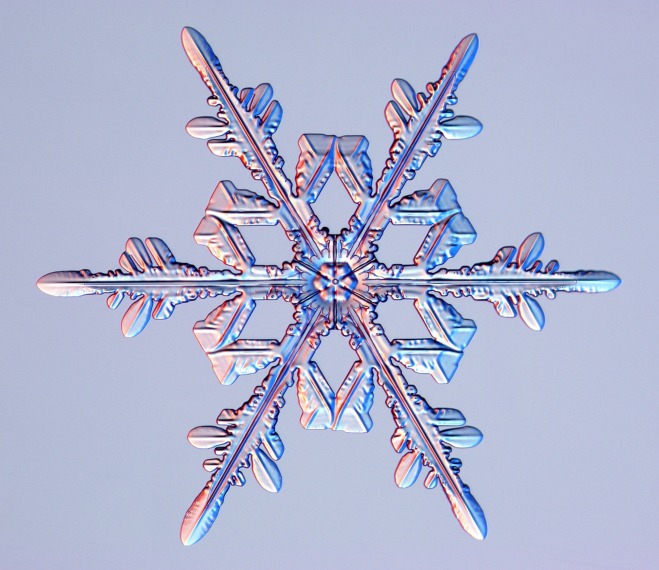
How Snowflakes Form: New Video Explains

Snowflakes may come in a dizzying array of shapes and sizes, but they're not so unique — at least not in how they form.
Every snowflake forms in the same way, explains Duke University mechanical engineer Adrian Bejan in a new video. They all start as a bead of ice forming around a small speck of dust in the atmosphere. This ice, counterintuitively, is warmer than the air around it, Bejan explains. Heat flows out from the bead, until it's no longer efficient for the bead to remain a bead. At that point, Bejan says, needles of ice protrude out from the bead, forming the familiar six-armed base for a beautiful crystal of snow.
As the needles of ice grow, the tips similarly cannot shed their heat efficiently, so they send out protrusions of their own. This continues as the snowflake falls, leading to a gorgeous ice filigree building upon itself. The explanation is based on an article by Bejan and his colleagues published in April 2013 in the journal Scientific Reports.
The uniqueness of each flake is a result of the temperature, humidity and air pressure the flake encounters as it forms. This gorgeous snowflake gallery highlights these one-of-a-kind ice sculptures. Or you can make your own using borax.
Follow Stephanie Pappas on Twitter and Google+. Follow us @livescience, Facebook & Google+.
Get the world’s most fascinating discoveries delivered straight to your inbox.

Stephanie Pappas is a contributing writer for Live Science, covering topics ranging from geoscience to archaeology to the human brain and behavior. She was previously a senior writer for Live Science but is now a freelancer based in Denver, Colorado, and regularly contributes to Scientific American and The Monitor, the monthly magazine of the American Psychological Association. Stephanie received a bachelor's degree in psychology from the University of South Carolina and a graduate certificate in science communication from the University of California, Santa Cruz.
